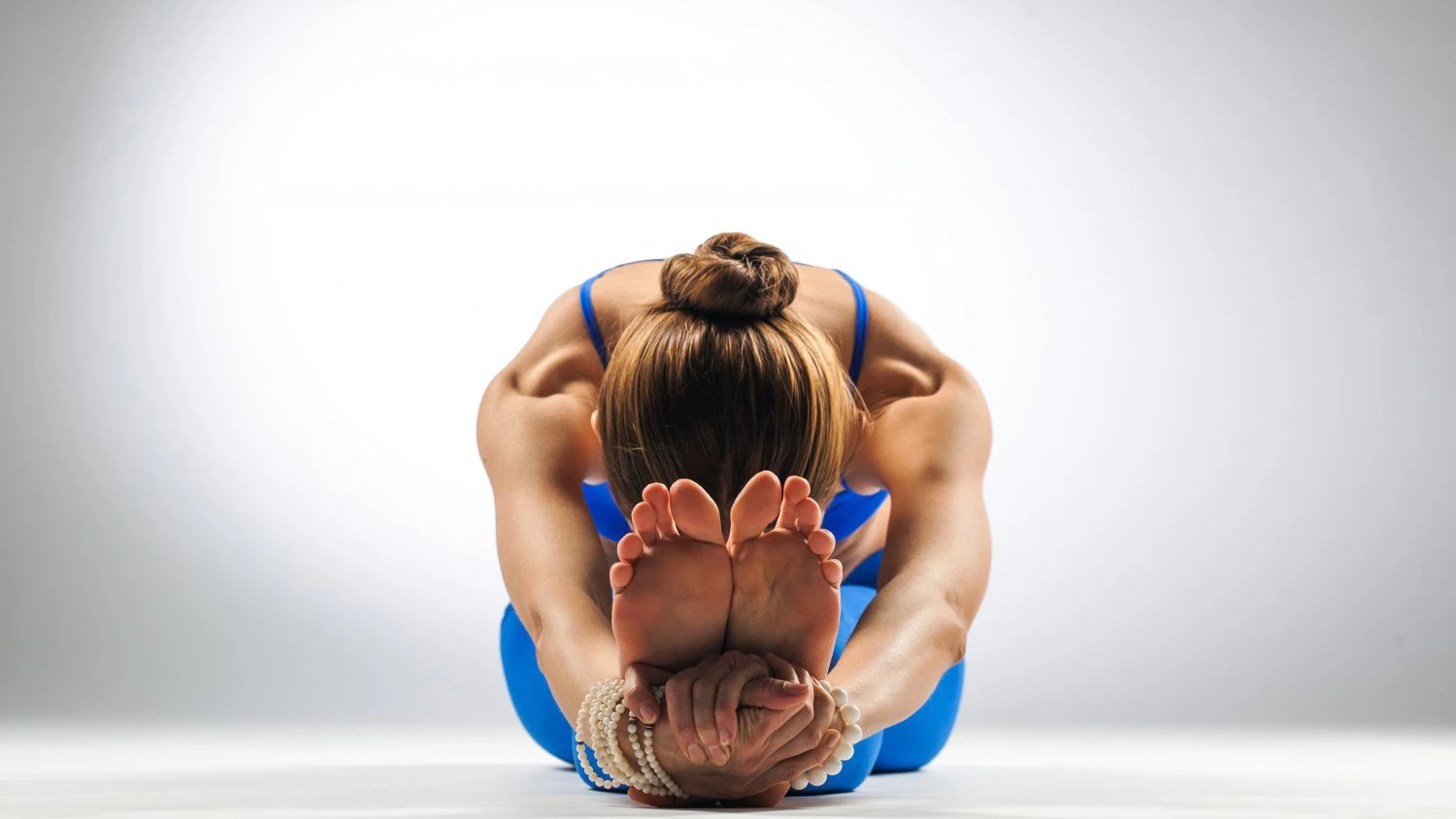Best Bet for Preventing Type 2 Diabetes? A Healthy Lifestyle Plus Yoga Says Study

Metabolic syndrome refers to a cluster of symptoms, which increase the risk for diabetes, heart disease, stroke and premature death. A study published in Diabetes & Metabolism finds that yoga may be an excellent and feasible addition to a healthy lifestyle for those with symptoms of metabolic syndrome.
Yoga Study on Benefits for Metabolic Syndrome
It has long been known that exercise, dietary improvements and weight loss are key to managing metabolic syndrome and preventing progression into more severe chronic diseases. In this study, researchers set out to determine if yoga might offer benefits for metabolic syndrome as well.
The researchers randomly assigned 67 adults (mean age 58 years [SD 10 years] and 51% male) with symptoms of metabolic syndrome to either a standardized health education (EDU) Group Lifestyle Balance Program group or an EDU plus yoga group. Participants needed to be English speaking, between the ages of 18 and 65 years and have elevated blood pressure and/or a diagnosis of hypertension, impaired fasting glucose, elevated cholesterol levels and a body mass index of 25 kg/m2 or greater (overweight to obese) to be included in the study. Exclusion criteria included use of diabetic medication or insulin, BP above 160/100, unstable cardiac disease, severe lung disease, dementia or cognitive impairment, an uncontrolled psychiatric disorder or a current mind-body practice (e.g. yoga, meditation, tai chi or qigong).
Participants in the health education group (EDU) only attended a 12-week comprehensive lifestyle behavior change program that had been adapted from a Diabetes Prevention Program funded by the National Institutes of Health (NIH). Weekly classes ranged from 60 to 75 minutes, and included instruction on healthy eating and exercise behaviors as well as skills for monitoring energy and fat intake.
The EDU plus yoga group were asked to attend 12 classes ranging from 60-75 minutes per session. This included a 30-45 minute yoga class in addition to an abbreviated, 30-45 minute EDU lifestyle education class immediately following the yoga practice. The yoga program was designed by an experienced group of three yoga therapists and was based on yoga from the Krishnamacharya tradition (Viniyoga).
Practices included postures coordinated with breathing, pranayama (breath modification) and meditation. Classes included six “serial practices” that were introduced every two weeks. Class duration increased from 30 to 45 minutes over the course of 12 weeks. Participants were also asked to practice yoga daily, and were given written instructions with stick figures to guide them. Experienced yoga teachers received comprehensive and identical training and monitoring to ensure that practices were consistent across instructors.
Yoga and Lifestyle Education are Feasible for Individuals with Symptoms of Metabolic Syndrome
One of the primary goals of this study was to test the feasibility of a yoga intervention for individuals with the symptoms of metabolic syndrome. There were no adverse events reported in either the yoga plus EDU or EDU alone groups, suggesting that each of these approaches may be safe for this population. Individuals from both groups attended a comparable median amount of sessions, nine (EDU) and eight (yoga) respectively. A total of five participants (three yoga and two EDU alone) stopped attending the intervention sessions.
Outcome data comparing the yoga plus EDU and EDU alone groups suggest that they are roughly similar in their effectiveness. Participants in the yoga group exhibited a non-significant reduction in their insulin resistance from baseline to 12 weeks. Larger baseline insulin resistance values were associated with greater reductions.
Members of both groups demonstrated similar amounts of weight loss, percent fat mass loss and triglyceride reductions, as well as comparable decreases in diastolic blood pressure. Participants in the yoga group experienced slightly greater decreases in systolic blood pressure values. Both groups also were found to substantially decrease their overall self-reported caloric intake and slightly increase their light physical activity.
In terms of exercise, members of the EDU group reported engaging in higher levels of daily physical activity compared to the yoga group. This is in spite of the fact that yoga group members were provided with take-home instructions for a daily practice. No changes in vigorous physical activity were detected in either group.
Findings from this study suggest that interventions for adults with metabolic syndrome that include healthy lifestyle coaching and yoga may prove safe and effective in reducing some of the symptoms and risk factors for the disease.
There are a number of issues with this study that limit our ability to interpret its findings, however. First, research associates collecting the post-intervention data were aware of participant’s group assignment. This introduces the possibility of bias in data collection and should always be avoided.
Second, the overall sample size for this study was smaller than anticipated. Consequently the researchers had insufficient statistical power to detect significant differences between the yoga plus EDU and EDU alone groups.
Lastly, only one third of participants in this study met all of the criteria for metabolic syndrome. The remaining two thirds had one or more risk factors for cardiometabolic disease, but not metabolic syndrome. Given this circumstance, it is difficult to ascertain whether either the yoga or EDU intervention would be feasible for those with the full complement of symptoms of the disease.
Prior studies with individuals with metabolic syndrome provide some support for the potential benefits of yoga for symptom reduction. Further, well-controlled and executed studies are required before we are able to make more definitive conclusions.
Study with YogaUOnline and Baxter Bell, MD: Yoga for Metabolic Syndrome.
Another article from YogaUOnline: Yoga Improves Markers of Metabolic Syndrome and Heart Disease.
 B Grace Bullock, PhD, E-RYT 500 is a psychologist, research scientist, educator, author, yoga and mindfulness expert and creator of BREATHE: 7 Skills for Mindful Relationships. Her mission is to reduce stress, increase health and wellbeing and improve the quality of relationships. She offers classes, workshops, writing and research that combine the wisdom of applied neuroscience, psychophysiology, psychology and contemplative science and practice. Her goal is to empower individuals, groups, leaders and organizations to reduce chronic stress and increase awareness, attention, compassion, mindfulness and effective communication to strengthen relationships, release dysfunctional patterns and unlock new and healthy ways of being. Dr. Bullock is a Certified Viniyoga Therapist and Faculty at the Integrated Health Yoga Therapy (IHYT) Training program. She is the former Senior Research Scientist at the Mind & Life Institute and former Editor-in-Chief of the International Journal of Yoga Therapy. For more information see www.bgracebullock.com
B Grace Bullock, PhD, E-RYT 500 is a psychologist, research scientist, educator, author, yoga and mindfulness expert and creator of BREATHE: 7 Skills for Mindful Relationships. Her mission is to reduce stress, increase health and wellbeing and improve the quality of relationships. She offers classes, workshops, writing and research that combine the wisdom of applied neuroscience, psychophysiology, psychology and contemplative science and practice. Her goal is to empower individuals, groups, leaders and organizations to reduce chronic stress and increase awareness, attention, compassion, mindfulness and effective communication to strengthen relationships, release dysfunctional patterns and unlock new and healthy ways of being. Dr. Bullock is a Certified Viniyoga Therapist and Faculty at the Integrated Health Yoga Therapy (IHYT) Training program. She is the former Senior Research Scientist at the Mind & Life Institute and former Editor-in-Chief of the International Journal of Yoga Therapy. For more information see www.bgracebullock.com
Sources
Birdee GS, Ikizler TA, Wheeler A, Bossart C, Wertenbaker D, et al. (2015) Yoga Combined With Health Education for Risk Reduction of Metabolic Syndrome: A Randomized Controlled Pilot Feasibility Study. J Diabetes Metab 6: 588. doi:10.4172/2155-6156.1000588



